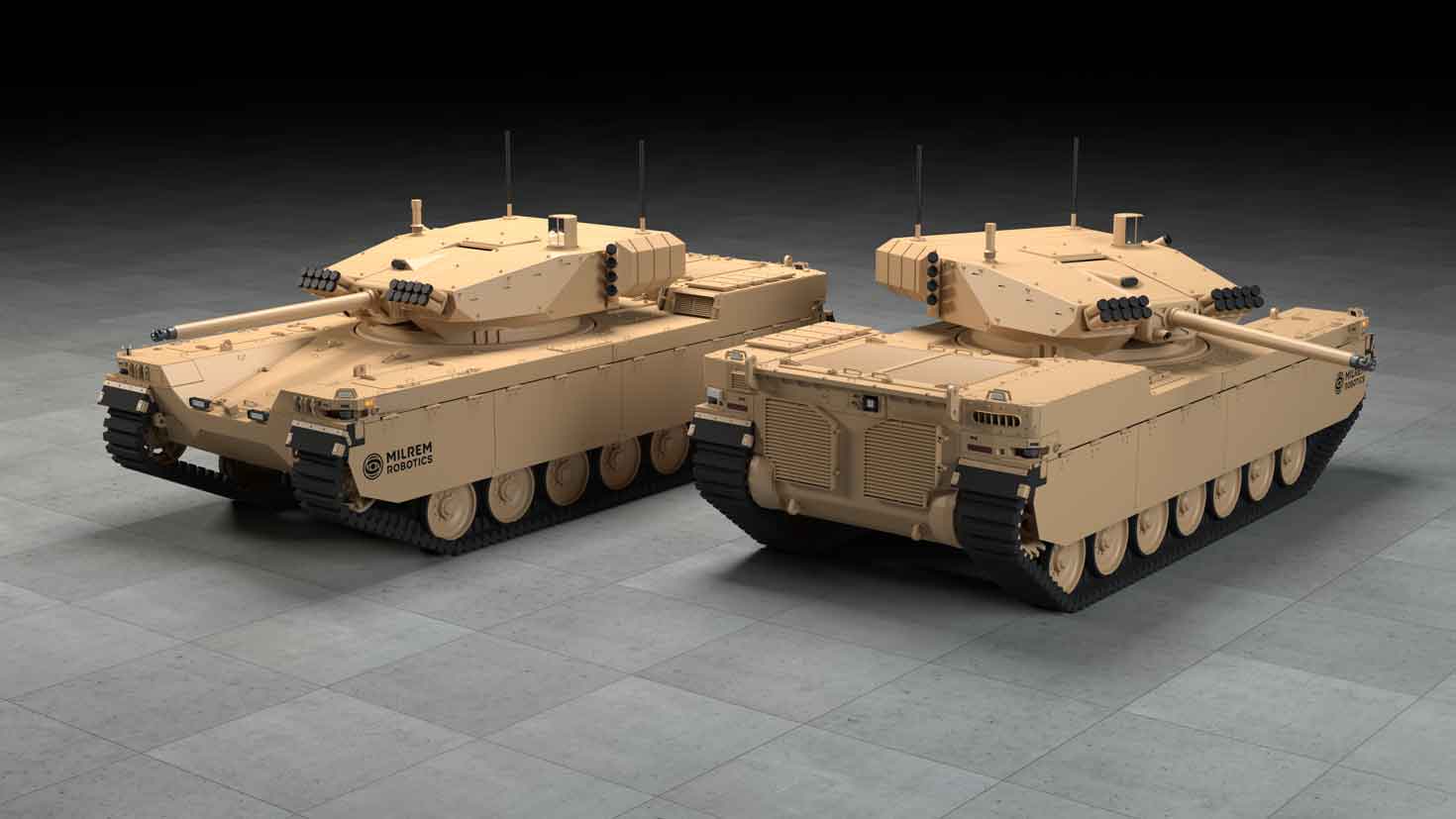Milrem Robotics rolls out its new Type-X RCV
Weighing just 12 tons, Milrem's Type-X Robotic Combat Vehicle can support units equipped with IFVs.
07 January 2021

The medium-class Type-X Robotic Combat Vehicle, developed by Estonia’s Milrem Robotics, has passed its initial mobility tests.
The Type-X RCV, which Milrem says is more cost effective and lighter weight than an Infantry Fighting Vehicles (IFV), is designed to support mechanised units and was first announced in the summer of 2020.
Milrem Robotics says the Type-X can act as an “intelligent wingman" to main battle tanks and IFVs.
“The Type-X will provide equal or overmatching firepower and tactical usage to a unit equipped with Infantry Fighting vehicles,” said Kuldar Väärsi, CEO of Milrem Robotics.
“It provides a means to breach enemy defensive positions with minimal risk for troops and replacing a lost RCV is purely a logistical nuance.
The Type-X can be fitted with a cannon up to 50 mm. With a 30 mm cannon, the RCV is also air-droppable — the C-130J and the KC-390 can carry one Type-X, an A400M can carry two of them, and a C-17 five.
“The vehicle will be equipped with intelligent functions such as follow-me, waypoint navigation and obstacle detection with Artificial Intelligence being part of the algorithms,” Väärsi said. “Also, Milrem Robotics’ software developers have taken a totally new and innovative approach to allow remote-controlled operations ot higher speeds.”
Väärsi said the Type-X's low weight of 12 tons and efficient power management provide a superior terrain capability. With a height of just 2.2 m and a rear engine, the Type-X also has a low visual and heat signature.
The Type-X is approximately three to four times lighter and costs significantly less than a conventional IFV. It features what Milrem terms “intelligent predictive maintenance,” combined with a Health and Usage Monitoring System and Line Replacement Unit to ensure a low through lifecycle cost and logistic footprint. Also, its hybrid powertrain and rubber tracks are designed to reduce lifecycle costs significantly.
To develop the Type-X RCV Milrem Robotics used its knowledge gained from developing its flagship product the THeMIS Unmanned Ground Vehicle, intended to support dismounted troops, which has been acquired by 10 countries, seven of which are members of the NATO military alliance.